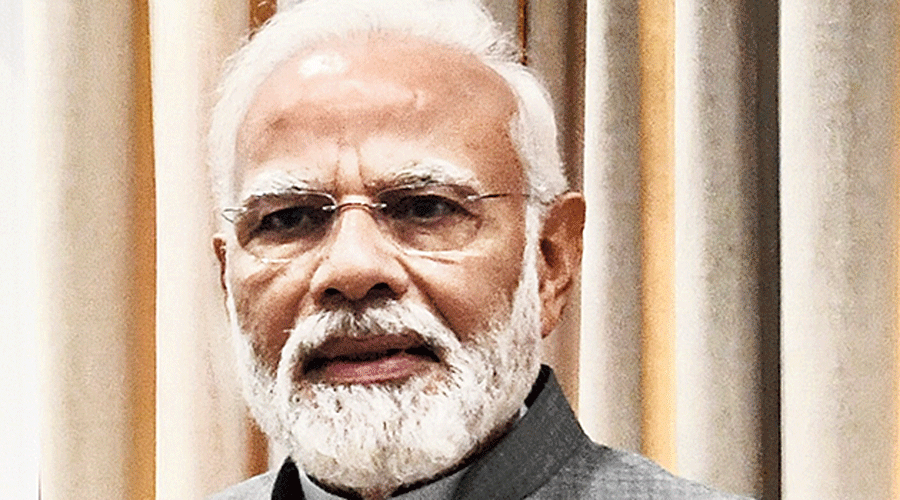In October 2017, when Prime Minister Narendra Modi attended the centenary celebrations of Patna University, chief minister Nitish Kumar sought his support to declare the institution a central university.
Modi responded that he “wants to take PU beyond a central university” and invited the university to bid for the central government’s new scheme of Institutions of Eminence (IoE).
Patna University did not eventually qualify for the “eminence” tag, but Modi’s comment was enough to show the importance he attached to the IoE scheme.
Yet, the 12 universities including 8 public-funded institutions that have secured IoE status, after a scrutiny by an empowered expert committee (EEC), have not received the expected government support since.
Four years after its launch, Modi’s pet scheme has been hobbled by delayed allocation of government funds and a gap in monitoring its progress.
For the public-funded IoEs, the government had promised financial support of up to Rs 1,000 crore — or 50 to 75 per cent of the requirements stated in 15-year plans presented by each — whichever was less. To all the public and private institutions it had promised relaxations of regulator UGC’s norms on fees, course design, faculty recruitment and the admission of foreign students.
The money was to be released within a span of five years starting from the financial year during which a university gained IoE status.
IIT Bombay, IIT Delhi and the Indian Institute of Science (IISc), Bangalore, were among the first batch of six institutions selected for the IoE tag in 2018. Another 14, including IIT Kharagpur and Jadavpur University, were selected the following year. However, of the 20, eight have not yet officially gained the tag for various reasons.
IIT Bombay, IIT Delhi and the IISc signed memorandums of understanding (MoUs) with the then human resource development (HRD) ministry in October 2018, stating their strategic plans. They have been receiving funds since 2018-19, while the five other public-funded IoEs have been doing so from 2019-20.
If one goes by the Rs 1,000-crore limit, none of these eight institutions has received even half that sum although the five-year period ends in March 2023 for three of them and in March 2024 for the other five.
Despite the “50 to 75 per cent” rider, it was always expected that these universities would receive close to Rs 1,000 crore.
Jadavpur University and Anna University — the two other public-funded institutions selected for IoE status — are yet to be officially awarded the tag since their state governments (Bengal and Tamil Nadu) have not committed to paying the part of the plan requirements not met by the Centre.
Funds delay
For almost the entire first two years, the IoEs did not receive funds for infrastructure although they got money under other heads such as recruitment and fellowship.
So far, IIT Delhi has received Rs 490.9 crore followed by IISc (Rs 450 crore) and IIT Bombay (Rs 429.94 crore) in about four-and-a-half years; while IIT Madras has received Rs 378 crore, followed by BHU (Rs 287 crore), IIT Kharagpur (Rs 223.13 crore), Hyderabad University (Rs 175.755 crore) and Delhi University (Rs 91.685 crore) in about three-and-a-half years.
Before the IoE scheme began, the government had launched a Higher Education Financing Agency (HEFA) to provide loans to institutions to expand their infrastructure. The HRD ministry asked the Institutions of Eminence to take loans from the HEFA for infrastructure expansion and pay these off from the IoE scheme funds, an official said.
The institutions agreed but the finance ministry objected because under an HEFA loan, the government pays the interest while the institution only repays the principal.
It was finally decided to give the funds to the IoEs, including the money for infrastructure, as usual grants. This bureaucratic process took almost two years. So the institutes began awarding the infrastructure project contracts in 2021, the official said.
The delayed funds release means the progress of the infrastructure expansion projects has been slower than the institutions had envisaged.
The MoU that IIT Bombay had signed with the government said it wanted to develop cutting-edge laboratories in areas of nanofabrication and characterisation, manufacturing and material, health sciences and engineering, data and information science, and the chemical sciences. But it hardly received Rs 60 crore before 2020-21.
According to the MoU signed by IIT Delhi, its Central Research Facility, which houses all testing and fabrication equipment, was to see major enhancement with IoE funds. The institute estimated an expenditure of about Rs 700 crore, out of the expected Rs 1,000 crore grant, for infrastructure projects. But the delay in receiving funds delayed the award of the contract by over two years, sources said.
Monitor hole
According to the IoE scheme regulations, the institutions are to inform the EEC every year on the progress made towards realising the goals set out in their 15-year strategic plans.
The government had in 2018 set up the EEC for three years under former chief election commissioner N. Gopalaswami. The Telegraph filed an RTI application to find out whether the EEC still existed. Kirti, a deputy director in the education ministry, said it did not.
“The EEC has (sic) completed its term of three
years on 19.02.2021. The matter of setting up of the EEC is under consideration of the Ministry of Education,” said the reply, dated August 10, 2022.
An email sent to higher education secretary Sanjay Murthy on September 6 seeking the reasons for the slow release of funds and the absence of an EEC has remained unanswered.










